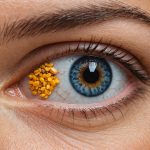Overview of Thyroid Disorders
Thyroid disorders are conditions that affect the proper functioning of the thyroid gland, which plays a crucial role in regulating metabolism. Understanding the types of thyroid disorders is essential for recognising and managing their symptoms effectively.
Common Types of Thyroid Disorders:
Also read : Transforming Weight Management: The Role of Digital Health Platforms in Supporting Obesity Patients
- Hypothyroidism: This condition occurs when the thyroid gland produces insufficient hormones. It often leads to feelings of fatigue and unexplained weight gain.
- Hyperthyroidism: The opposite of hypothyroidism, hyperthyroidism involves excess hormone production, causing symptoms like weight loss and irritability.
- Thyroiditis: This inflammation of the thyroid can disrupt hormone levels, leading to fluctuating symptoms.
Recognising the symptoms of thyroid conditions is vital for timely intervention and management. Common signs include persistent fatigue, noticeable changes in weight, and mood swings. These symptoms impact daily life, highlighting the importance of understanding thyroid health for maintaining overall well-being.
Regular health check-ups and thyroid function tests are recommended, especially if you experience these symptoms persistently. Early detection and treatment can significantly improve the quality of life for individuals with thyroid disorders.
This might interest you : Enhancing Physical Rehabilitation: The Role of Avatars in Virtual Reality Environments
Importance of Early Detection
Understanding the importance of early detection in the diagnosis of thyroid disorders can significantly improve patient outcomes. Early identification facilitates prompt treatment, which can correlate with higher success rates and reduce the risk of chronic health issues. A timely diagnosis allows medical professionals to implement effective interventions, crucial in managing thyroid health.
Routine screenings play a pivotal role in preventing complications associated with thyroid disorders. They enable healthcare providers to catch abnormalities before they develop into serious conditions. Regular monitoring ensures early intervention, decreasing the long-term effects and enhancing overall health management.
The impact of early detection on patient outcomes is profound. Individuals diagnosed at an early stage often experience better prognosis and fewer complications. Addressing thyroid issues quickly can also minimize disruptions to daily life, such as fatigue and weight changes, while improving the patient’s quality of life.
Consistent screening and vigilance allow for a proactive approach, giving patients the best chance for a positive health trajectory. Engaging in discussions with healthcare providers about suitable screening options can aid in timely discovery, ultimately ensuring more robust and sustainable health management.
Statistics on Treatment Success Rates
Understanding the treatment success rates for thyroid disorders can help guide patients and healthcare practitioners in making informed decisions. Recent studies emphasize the importance of early diagnosis. When thyroid disorders are diagnosed early, the patient outcomes are significantly improved. A study found that the success rate for treatment increases by approximately 30% with early diagnosis compared to late-stage diagnosis. This highlights not only the success but the necessity of prompt medical attention.
Thyroid disorder statistics show a concerning trend when conditions go undiagnosed. The lack of timely intervention often leads to complications, affecting overall health statistics adversely. According to researchers, undiagnosed thyroid conditions are linked to a higher risk of cardiovascular diseases and reduced quality of life.
Furthermore, recent studies illuminate the improvements in patient outcomes through early intervention. Patients receiving appropriate treatment soon after diagnosis generally exhibit fewer symptoms and a lower likelihood of developing additional health complications. This underscores the substantial benefits of proactive management in treating thyroid disorders effectively.
Case Studies and Real-World Examples
Delving into case studies provides invaluable insights into patient outcomes and the efficacy of treatments. For instance, when considering the impact of early detection, an enlightening example emerges from a recent study involving breast cancer patients. Those diagnosed early experienced significantly enhanced outcomes compared to those identified at later stages. This reflects the crucial role early intervention plays in determining the success of medical treatments.
In another case, striking differences were observed in lung cancer treatment responses between early and late diagnoses. Patients who received prompt treatment post-diagnosis often exhibited better survival rates and quality of life. These examples underscore how early treatment efficacy can improve patient prognosis and overall health outcomes.
From these case studies, healthcare providers have gleaned valuable lessons. Emphasising early detection leads to major advancements in treatment approaches. Incorporating these findings into standard practices can boost success rates and improve long-term outcomes. Consequently, innovative screening and diagnostic methods should become routine in medical evaluations to optimise care and enhance patient experiences.
Expert Insights on Screening and Diagnosis
Understanding expert recommendations is crucial for effectively implementing screening protocols. Current screening guidelines emphasize the importance of early detection, underscoring the need for routine check-ups and timely interventions. These guidelines serve as a roadmap for both healthcare providers and patients, fostering a collaborative approach to health management.
Incorporating healthcare insights ensures that both parties are well-informed about potential risks and the benefits of early screening. This collaboration is pivotal in devising personalised healthcare strategies that cater to individual needs. Regular communication between patients and healthcare professionals can enhance adherence to screening schedules and improve overall health outcomes.
Furthermore, the role of innovative diagnostic tools and techniques in modern healthcare cannot be overlooked. These advancements have significantly bolstered the accuracy and efficiency of screenings, offering more precise diagnosis possibilities. Techniques such as digital imaging and molecular diagnostics have transformed the landscape, enabling doctors to detect conditions at earlier stages than ever before.
Such expert insights and technological advancements support a comprehensive approach to screening and diagnosis, prioritising patient wellness through cutting-edge methodologies. Leveraging these insights can lead to better health outcomes and increased patient trust in the healthcare system.
Practical Recommendations for Patients and Providers
Incorporating early screening into healthcare practices can significantly impact patient outcomes. For patients, personal advocacy involves proactive communication with healthcare providers. Asking pertinent questions about healthcare strategies and being informed about your genetic or familial risks are key steps.
For healthcare providers, identifying at-risk individuals should be a priority. Guidelines suggest using patient history and screening tools to assess risk factors efficiently. This means utilising resources like online risk calculators and routinely updating knowledge in patient recommendations to guide care plans.
Enhancing patient education is crucial. Providers can employ multimedia tools to explain complex concepts in simple terms, ensuring patients comprehend the importance of screenings. Educational workshops and digital platforms tailored to different learning preferences can bridge knowledge gaps, making patients more receptive to early interventions. By adopting these strategies, the healthcare system becomes more proactive, ensuring patients and providers work collaboratively towards optimal health outcomes.











